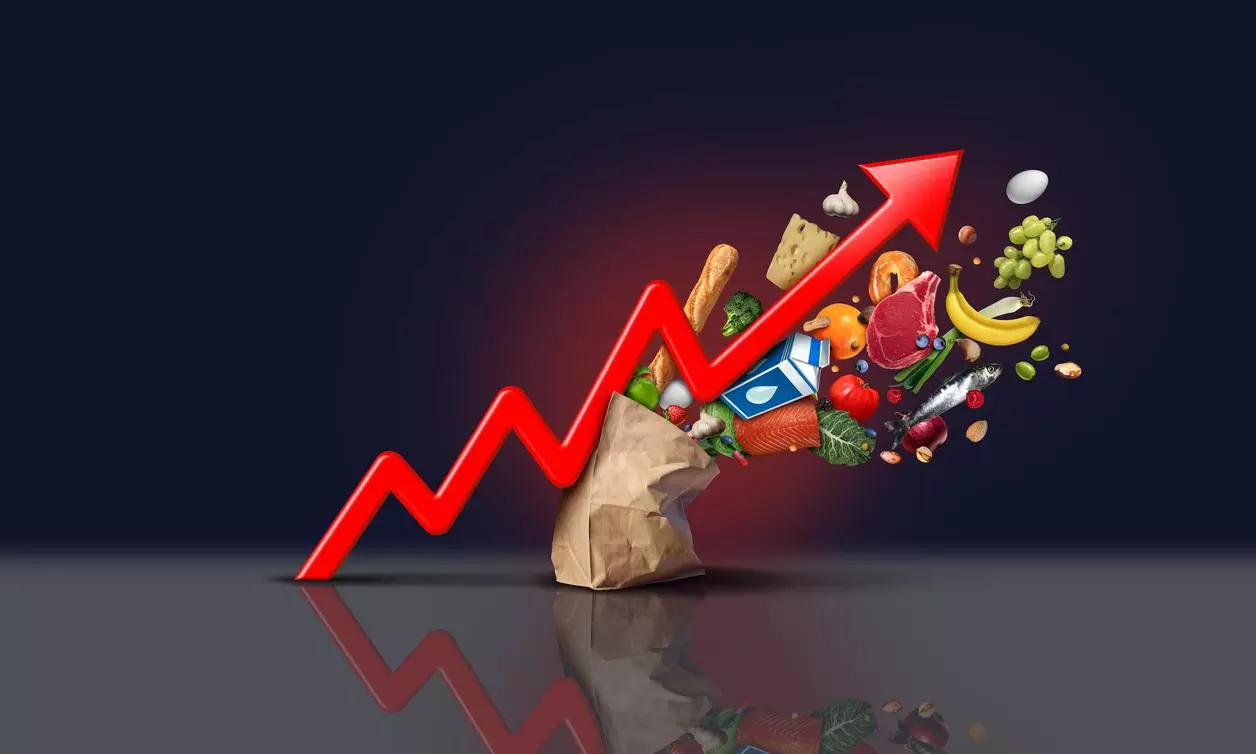
Inflation leaves Indian middle class, and its buying capacity, shrinking
While middle class is curtailing spending, bottom and top ends of consumer pyramid are happily spending; car sales trends, for one, reflect this pattern

Inflation is back to pinch household budgets, with kitchen staples such as onions selling for ₹80 a kg for several weeks now across Delhi’s weekly vegetable markets. Potatoes do not come for anything less than ₹50 and tomatoes are anywhere at ₹60-80 a kg now.
Winter greens such as spinach and spring onions are also selling for upto ₹80 a kg.
Not just vegetables, prices of milk have seen multiple rounds of increase over the past 12 months and edible oils remain on the boil. The demands on the middle income class pocket, especially for food and essentials, continue to scale up but incomes have not kept pace.
As a result, the size of the middle class, and its buying capacity, appears to be shrinking.
FMCG sales fall
In its latest monthly review of the economy, the Ministry of Finance has quoted a survey by the National Bank For Agriculture And Rural Development (Nabard) to say that while eight in 10 rural households reported an increase in consumption expenditure over a 12-month period, volume growth in urban FMCG (fast moving consumer goods) sales fell to just 2.8 per cent in the June quarter this fiscal over 10.1 per cent in the same quarter of the previous fiscal.
Sales of automobiles fell 2.3 per cent in the first six months till September this fiscal, mainly due to a decline in urban markets in the September quarter.
Also read: ITC, HUL, Amul can rein in tomato, onion prices as govt, RBI look on, helpless
A slowing consumption in cities has led companies selling soaps, hair oils, cooking oils and biscuits – usually accurate markers of consumption across the country’s urban, semi-urban and rural markets – to report shrinking bottom lines for the September quarter.
Shrinking middle-class?
In fact, Nestle India, which sells Maggi noodles, chocolates and baby food, has gone a step further and expressed doubts about the fortunes of the famous and large Indian middle-class, which it suspects could be shrinking.
Nestile India MD Suresh Narayanan has been quoted by various media reports as saying recently, “There is a top-end and people with money are spending like that is going out of style. The middle class of the country seems to be shrinking. The ones who are offering reasonable value in the middle segment are finding their fortunes temporarily shrinking.”
The middle class is now hesitant to purchase items of daily need but parallelly, the trend of ‘premiumisation’ in consumer durables, household appliances, cars etc., is growing. So, while the middle class is curtailing spending, the bottom and the top ends of the consumer pyramid are happily spending.
Also read | Inflation demands long-term vision and decisive action
Car sales trends
Take the surprise 10 per cent growth in entry-level hatchbacks (small cars) which Maruti Suzuki India has posted in October. Officials said they were pleasantly surprised with the bounce back in rural car buying during this festival season and the trend would likely continue due to growing farm incomes on a good harvest.
Hyundai Motor India, on the other hand, has reported robust sales volumes continuing in the SUV segment, while the share of hatchbacks and sedans in its overall portfolio has declined further in the September quarter. Hatchbacks are typically priced under ₹10 lakh and some are seen as favourites of consumers who want to upgrade from a two-wheeler and own their first four-wheeler – this is especially true in India’s hinterland.
So, while Maruti is speaking of growth coming back to the entry level car segment due to a rural push, Hyundai’s product mix shows the parallel growing trend of premiumisation. Only the middle class seems to be getting squeezed at both ends.
On the whole, though, car sales are expected to remain muted this fiscal year despite the robust festival season numbers, as the pent-up demand seen after the COVID-19 lockdowns has been exhausted.
Also read: Monsoon vagaries, inconsistent policy behind spike in onion prices
Inflation impact
How does inflation impact spending across various classes? Economists at CRISIL said recently the effect of inflation varies across income groups since the share of spending on food, fuel and core categories differs for classes.
Essential items, such as food and fuel, occupy a greater share in the consumption basket of the lower income groups. So, as inflation continues to edge up, not just the lower income groups but even those in the middle are now becoming wary of spending for the time being.
According to government’s data, CPI inflation was up at 6.2 per cent in October against 5.5 per cent in September. The September number was anyway a nine-month high, against 3.7 per cent in August.
Food inflation
Economists at CARE Ratings said that despite a favourable base in October (due to year-ago numbers), it was the high food inflation which kept the headline inflation elevated.
“Food inflation remains a concern, rising to a 15-month high of 9.7 per cent in October. Inflation continues to remain high in vegetables (42 per cent year on year), edible oils (9.5 per cent), fruits (8.4 per cent), pulses (7.4 per cent) and cereals (6.9 per cent)," said CARE.
Also read: Red vs White | Maharashtra farmers fume over 'pro-Gujarat' onion export ban
The surge in vegetable prices, particularly tomatoes and onions, was due to unseasonal rains and extended monsoons in certain parts of the country. As for edible oils, the mid-September increase in basic customs duty by the government contributed to their elevated prices.
Analysts said that going forward, managing food inflation would be crucial, as it directly impacts household inflation expectations. The government may need to make some supply side interventions to manage the inflation print going forward.

